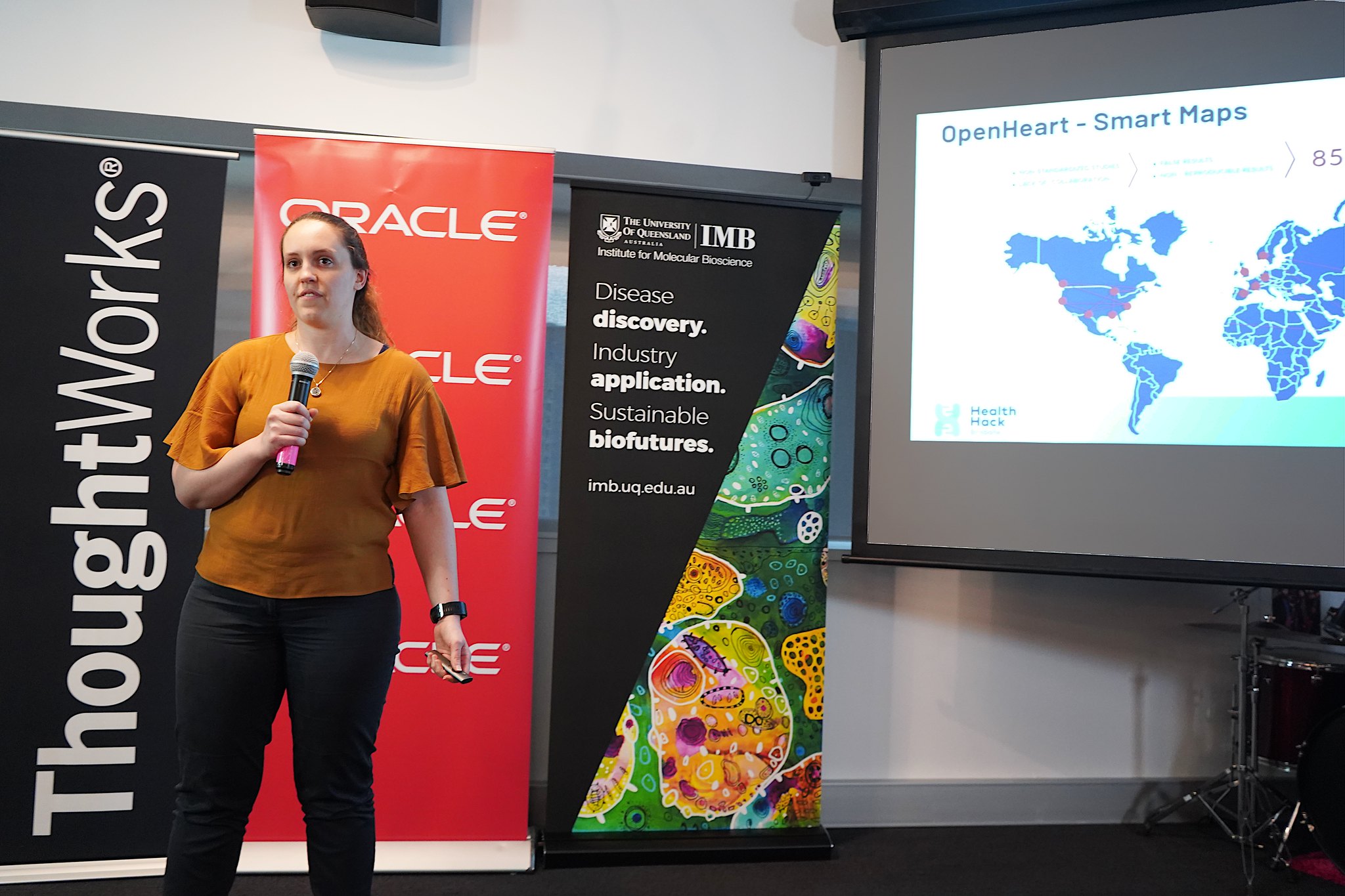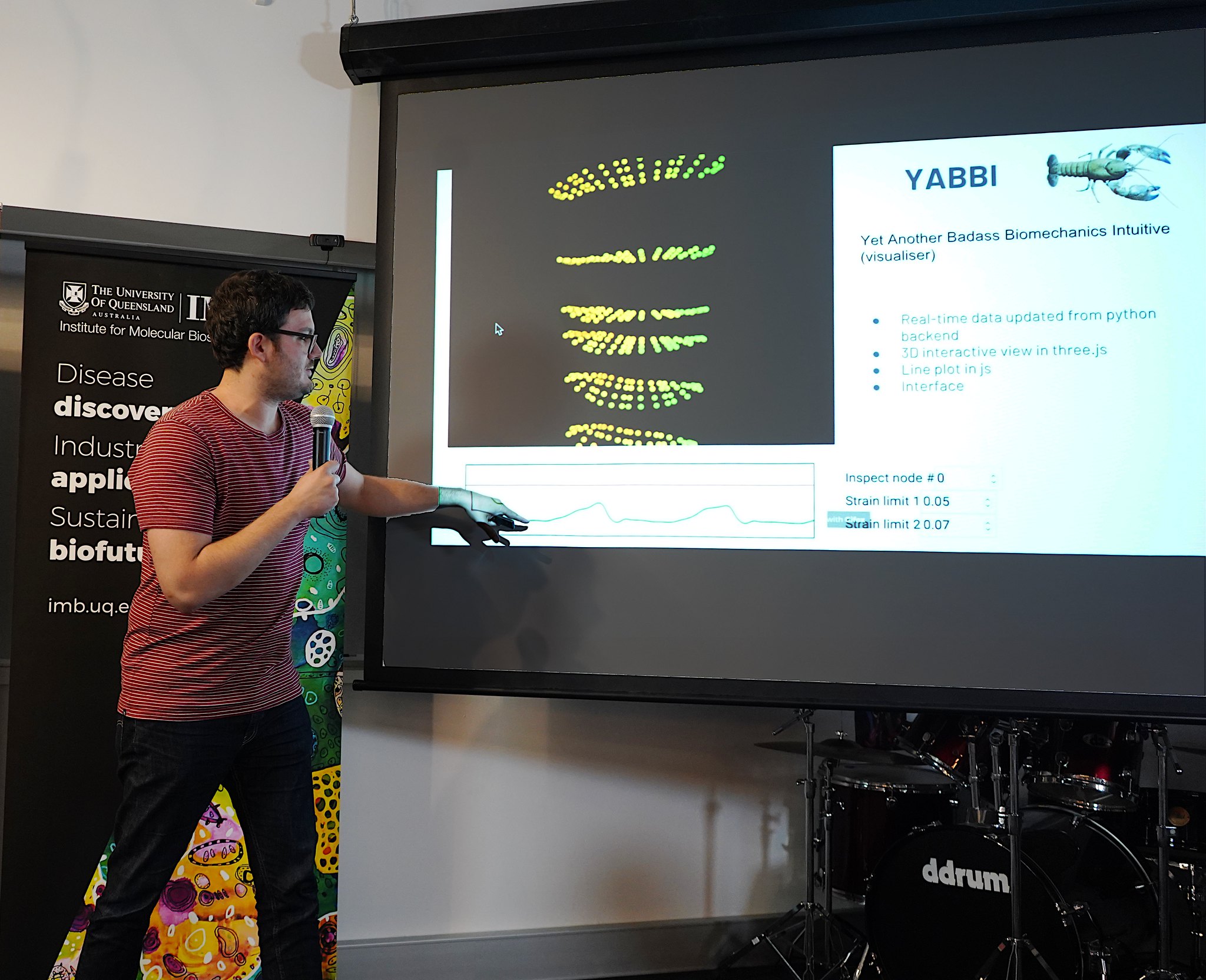We had 180 sign ups for the event via our website. Whilst we didn’t take a roll at the event itself we estimate about 70% of them attended the event at some stage over the weekend.
Once again we had roughly a 50-50 split between male and female participants, with this year slightly favouring female participants. We also offered free childcare and had 3 parents sign up to take advantage of that.
We had 10 projects delivered on the Sunday night. Here’s what was pitched.
RT Seizure Prediction
Hardware and software platform for real time seizure prediction.
Epilepsy sufferers regard the unpredictability of seizures as the most distressing aspect of their illness. Being able to predict when a seizure will occur would largely reduce the fear these patients feel when carrying out normal activities such as being in a public space or driving a car. There is no wearable device that can produce reliable real-time alarms.
Problem Owner
Ruben Pellicer Guridi - https://www.linkedin.com/in/ruben-pellicer-70533a86/
Slides
https://docs.google.com/presentation/d/1fy6g_M9QOyZmCP7qTHonQzO-vUgd1mKjRoHHwoQJ2Jk/edit?usp=sharing
Translate Sign Language
Translate sign language in real-time because of an inability to communicate over video using sign language.
The advent of real-time video chat has enabled people to communicate naturally regardless of their location. One group of people, however, have not experienced quite the same level of empowerment. People who can only communicate using sign language are limited to text chat when they need to communicate remotely, a medium with clear limitations. Perhaps most importantly, with the growing adoption of telehealth, deaf people need to be able to communicate naturally with health practitioners, regardless of whether the practitioner knows sign language.
Problem Owners
Kaamraan Kamaal - https://www.linkedin.com/in/kaamraan-kamaal/
Tom Quirk - https://www.linkedin.com/in/tom-quirk/
Slides
https://docs.google.com/presentation/d/12WGlQ6g0sjuRFmI_jbMtsQ7VfGpaxiCFqcu-ue_jBTE/edit?usp=sharing
CareXchange
Secure private data sharing for health teams.
Despite all the advances in technology, healthcare continues to rely on paper, fax machine, internal mail and pager. These current modes of communication are simply inefficient, insecure, fragmented and do not offer clinicians a method of quick and easy communication for sharing/discussing clinical cases and handover information. To overcome this, medical professionals are using personal mobile devices to support their work, potentially compromising patient privacy and security.
Eat Me
Addressing malnutrition in hospitals by intelligent monitoring of patient meals.
Malnutrition remains a significant health issue for Australian hospitals affecting approximately 35-43% of patients. Evidence indicates malnutrition is associated with adverse outcomes such as prolonged length of hospital stay and frequent readmissions, increased risk of infection, falls, pressure ulcers, increased health-care costs and mortality.
Food waste within the hospital environment is another ongoing challenge for organisations, which has both environmental and economic impacts. Monitoring food waste to address this challenge is difficult due to the of resource intensive nature of collecting timely data of suitable quality and quantity.
Ethics Tracker
Creating a robust and easy-to-use system for managing important documents relating to research in laboratories, particularly for ethical research approvals.
Whenever humans or animals are involved with a research study, investigators must first satisfy the wider community that the benefits of the research outweighs potential risk to the research subjects. To fulfil this obligation, investigators undertaking new research studies must submit an application to the appropriate institutional ethics committee beforehand. This application outlines the protocol that will be followed during the course of the study, and the steps taken to minimise harm to research subjects. What we need is a rigorous system that any laboratory can readily employ for easily managing these important documents.
Mediroo
Chatbot to improve health and medication adherence.
50% of Australians suffer from one or more chronic diseases and up to 70% of people forget what information their doctors told them post consultation within 15 minutes of leaving the clinic. As the Australian population ages, there is an increasing need to support the existing and struggling health infrastructure by providing valuable digital health interventions. No platform in Australia is publicly available which supports the ageing population to manage their medication through an SMS based service, which research suggests can provide beneficial adherence outcomes. We also understand that medication management is not only a problem of forgetfulness, rather a multivariate problem which can be encompassed by behaviours, beliefs and barriers.
ML for Medical Imaging, MLMedic
Easy-to-use GUI to help clinicians and scientists measure and visualize the brain using advanced machine learning (ML) Techniques.
Magnetic Resonance Imaging (MRI) scans are used by clinicians to diagnose and treat many common neurodegenerative diseases and disorders including Alzheimer’s dementia. To measure the progress of these, and to understand healthy brain functioning, brain images can be ‘segmented’ and visualized using many software packages and tools in Linux with specific dependencies.
We would like to implement a user-friendly cross-platform interface that reads-in MRI (DICOM) data from a clinic or research institution, and provides accurate brain segmentations using ML that can be used as an assistive tool for diagnosis and tracking of disease and disorder. We will call this “Machine Learning for Medical Imaging”, MLMedic, which could automatically detect tumors and growths and measure their size and shape. We would like to design a GUI that applies pre-trained ML models on data collected in the clinic for an easy ML interface for the masses.
OkToTalk
Automatically recommending suitable psychologists for people based on their needs, preferences, and demographics.
Many people have trouble finding a psychologist they ‘click’ with. Millions of Australians never seek the help they need, and many of those who do give up after one session, or waste money and emotional energy ‘auditioning’ multiple psychologists.
Our service currently makes automated recommendations for some website visitors with human clinicians contributing guidance and recommendations about half the time. The recommender system is hand-tuned. The amount of human involvement makes it hard to serve the large number of people looking for help.
Problem Owner
Matthew Beauregard - https://www.linkedin.com/in/matthewbeauregard/
Slides https://docs.google.com/presentation/d/1uWhBmlG9y1qb9SiayHr_wWRlgtWfD5P9LQ-M2PPKMjU/edit?usp=sharing
Open Heart Project – Smart Maps
Create a database of heart failure and mechanical circulatory support statistics.
The OpenHeart Project (https://openheartproject.org) , currently lead by the Innovative Cardiovascular Engineering and Technology Laboratory (ICETLAB), is an open-source online research project which aims to improve research practices within the field of mechanical circulatory support and ultimately improve outcomes and quality of life of heart failure patients around the globe. OpenHeart Project currently maintains a collaborative platform to share designs and testing for mechanical circulatory support.
To complement this, the OpenHeart Project would like to curate and display dataset around heart failure and mechanical circulatory support.
Collating this data will open up multiple opportunities for new research and improved outcomes. As an immediate short-term translation the database can function as an educational tool for students, researchers and the general public interested or working in the field of mechanical circulatory support. Furthermore, the database can be a starting point to consider big data / machine learning and model predictive tools to predict future trends in mechanical circulatory support.
Problem Owners
Jo Pauls - https://www.linkedin.com/in/jo-philipp-pauls-852b48ab/
Nicole Bartnikowski - https://www.linkedin.com/in/nicole-bartnikowski-b77aba9a/
Slides https://docs.google.com/presentation/d/1Gbp_b55bnGjOibaptYY2yE7vg-TpwR-yg-k2QQZ6Qfk/edit?usp=sharing
RT Biofeedback Visualisation
Real-time data visualisation for biofeedback rehabilitation: looking into what happens in people’s muscles and tendons to create better treatments.
Osteoarthritis and tendinopathies are painful conditions that affect more than 30% of Australians, resulting in poor quality of life. Despite decades of research, conservative treatments for these diseases are still limited to drugs to manage pain and no other cure exist. More recently, exercise programs to strengthen muscles have shown promising results in reducing pain, but outcomes vary across people and stages of disease, making a generic one-size-fits-all approach ineffective. What is required is a novel and personalised approach to promote tissue regeneration within the human body.
We are now able, via digital twins, to calculate all the biomechanical variables that affect tissue health in an individual, but these need to be visualised in real-time, so they can be instantaneously changed to bring them back to optimal level.
Problem Owner
Claudio Pizzolato - https://www.linkedin.com/in/claudio-pizzolato-0b03b34a/
Slides
https://docs.google.com/presentation/d/1Y_SltQmEBJBgt0Rj6d5M0hq2G_LL9iwwRia18egMxy4/edit?usp=sharing
Want to learn/see more?
See all the action from the event here: https://www.flickr.com/photos/bystandr/albums/72157693193234871. You are welcome to use any of these pictures as they licenced under Creative Commons, but please remember to credit photos to Dr Nick Hamilton. Twitter is best: https://twitter.com/DoktrNick @DoktrNick
You can check out all the code from the weekend (and all other HealthHack events) at our Github: https://github.com/HealthHackAustralia/HealthHackAustralia/blob/master/README.md
Finally you can follow us on our social media to stay up to date with all the HealthHack latest
Twitter: https://twitter.com/HealthHackAu
Linkedin: https://www.linkedin.com/company/18282422/
YouTube: https://www.youtube.com/channel/UC1l1itVMUJ26TVz3BaBx_Dg
HealthHack was proudly fueled by bananas...











